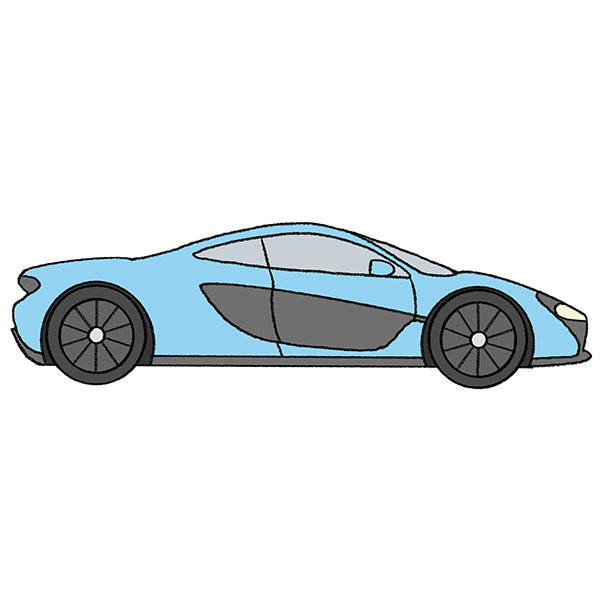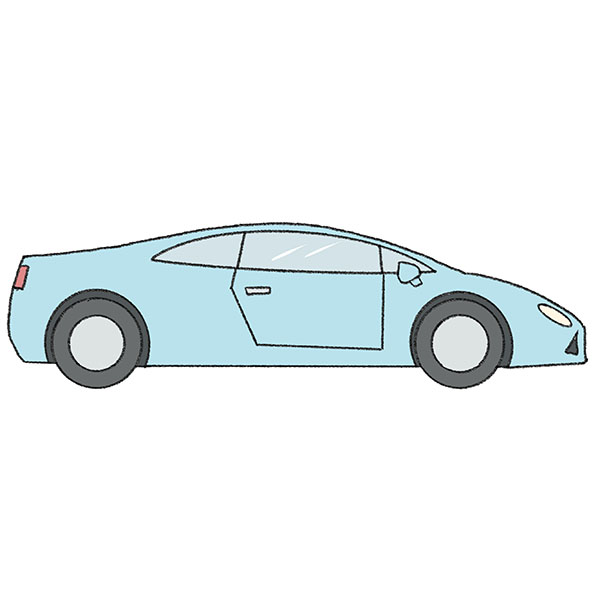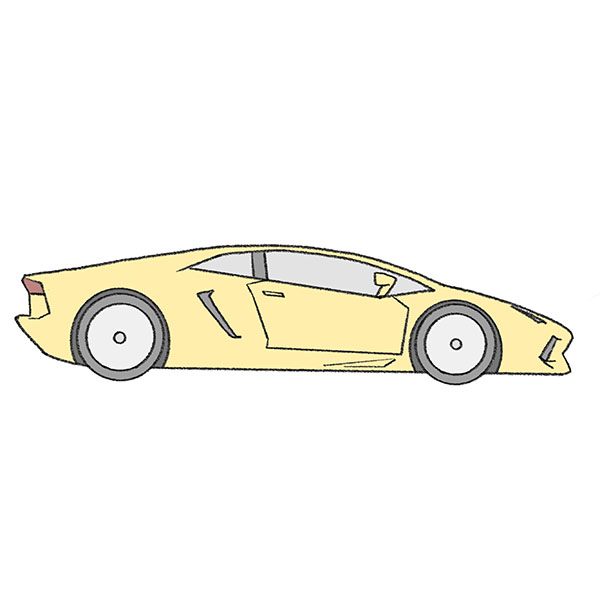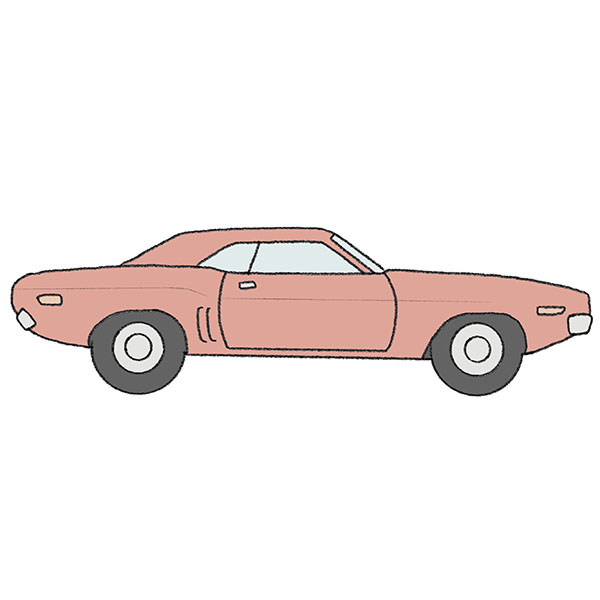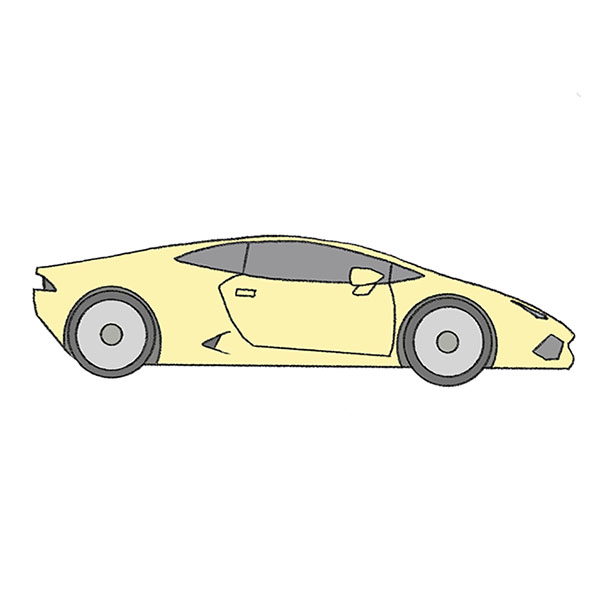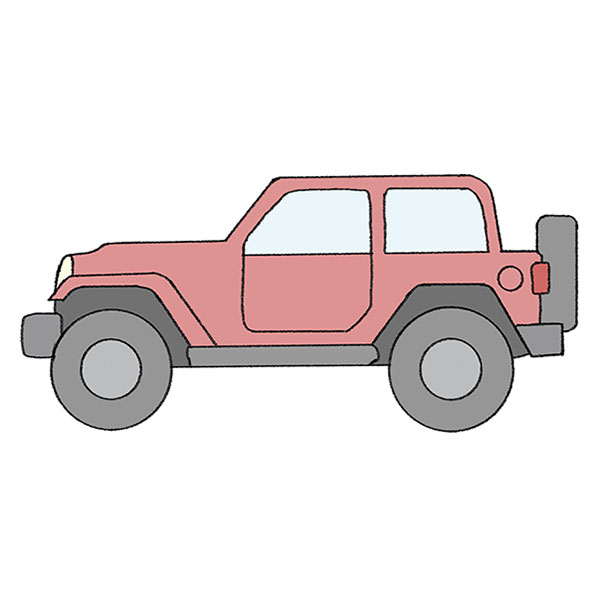How to Draw a Police Car
Welcome to my tutorial on how to draw a police car, where I used geometric shapes and clear lines to depict the iconic features of a police vehicle.
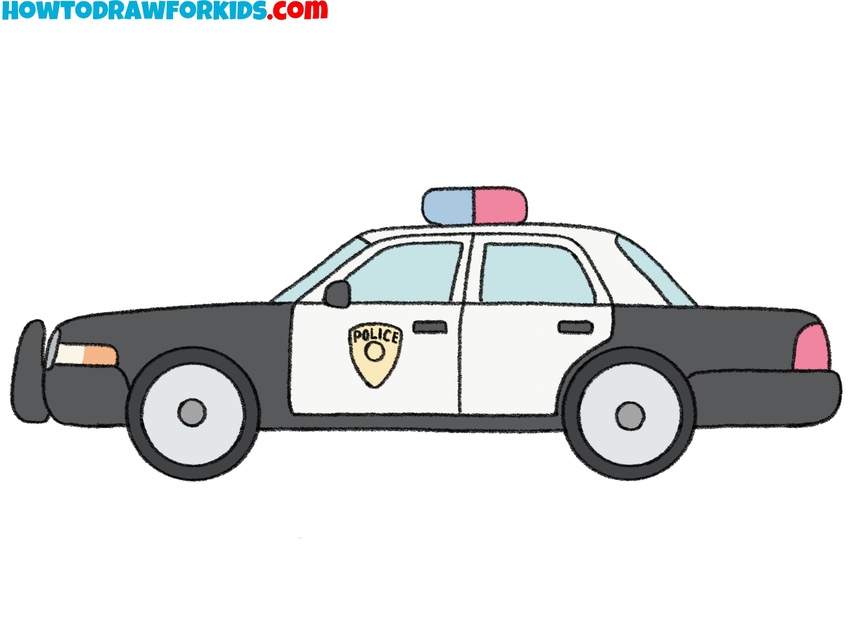
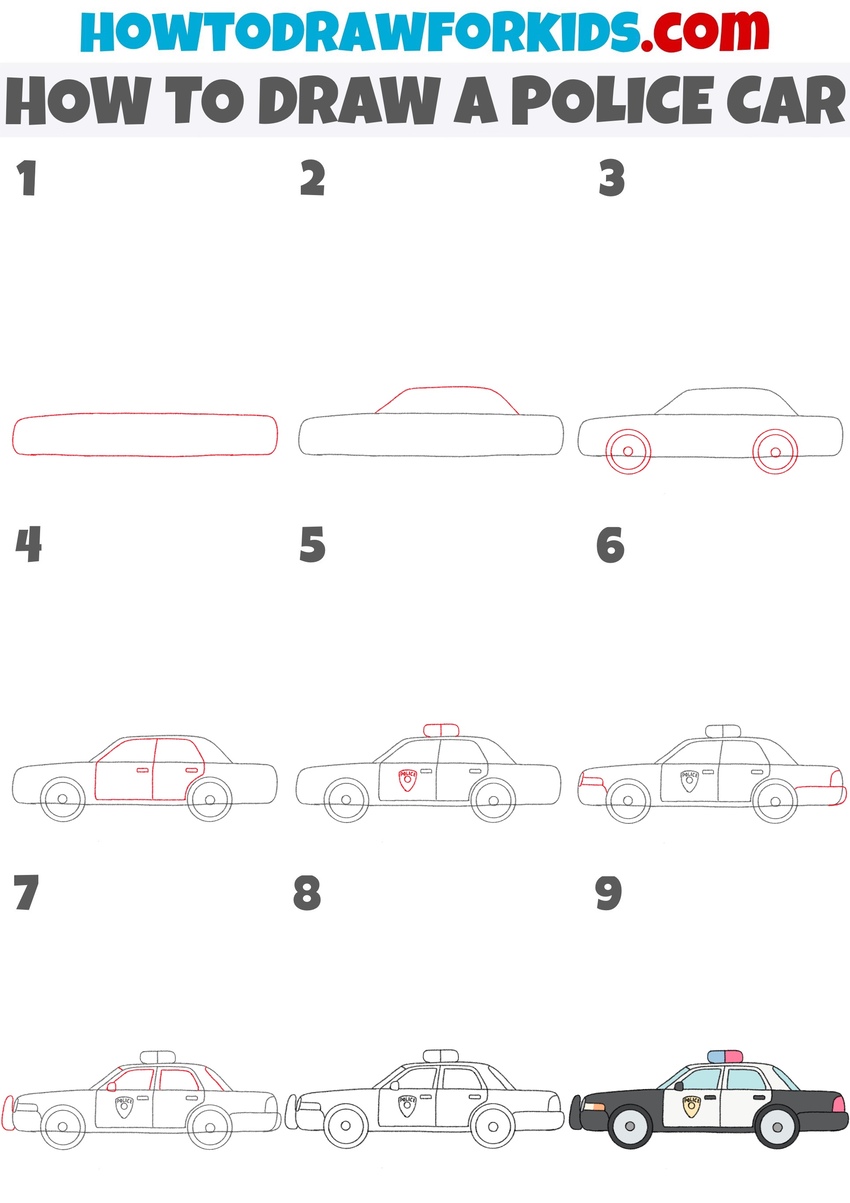
How to Draw a Police Car: Introduction
I’m excited to share this easy-to-follow guide on how to draw a police car, a vehicle known for its distinct design and role in community safety. In this tutorial, we’ll use simple lines and shapes to create a recognizable police vehicle step by step.
We’ll start by drawing a car and gradually adding police elements, such as a siren on the roof and a police badge on the side. Police cars vary by country and department, but for this tutorial, I’ll demonstrate how to draw a classic Ford Crown Victoria police car.
The specific features of police cars, such as sirens, color schemes, and logos, also differ. In this example, I’ll use the traditional look of a classic U.S. police car with an authentic siren, a distinctive color scheme, and a police badge on the door. However, you can modify your drawing by changing the car model or adjusting its police markings.
Whether you’re drawing a classic sedan or a large police truck, practicing different styles will help improve your skills. To illustrate the variety in police vehicle designs, I’ve created additional police car drawing tutorials. These tutorials will show different styles and more simplified drawing methods.
Police Car Drawing Tutorial
Materials
- Pencil
- Paper
- Eraser
- Coloring supplies
Additional Content
Time needed: 35 minutes
How to Draw a Police Car
- Draw the police car’s base shape.
Start this tutorial on how to draw a police car by sketching a long, slightly rounded rectangle to form the base shape of the police vehicle. This simple shape serves as the foundation for the body of the police car. Keep the lines smooth and light. Adjust the shape depending on the desired car type.
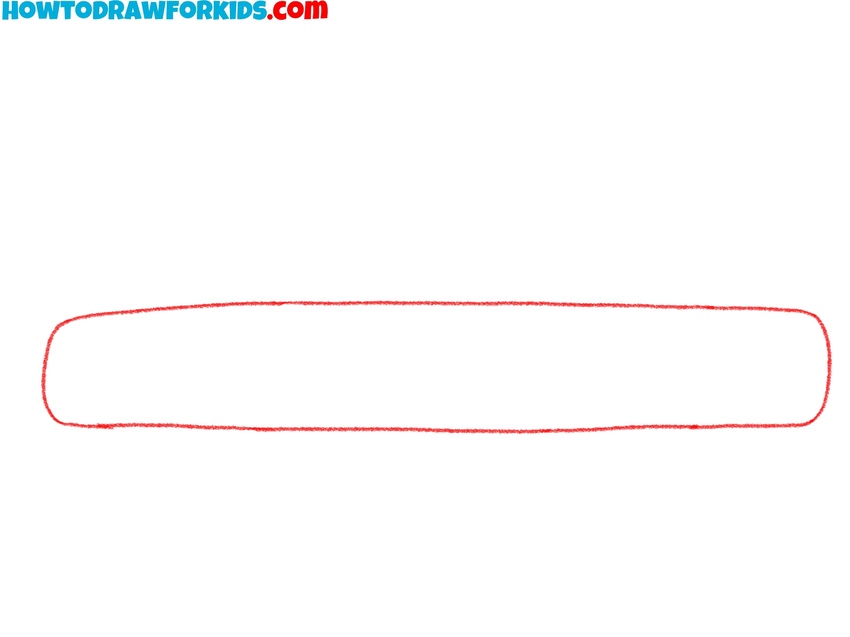
- Outline the roof of the vehicle.
Now, add the upper part of the car by sketching the roof shape. Draw a slightly curved line on top of the base to create the roof structure, making sure it slopes gently at both ends to resemble a classic sedan. This shape should be located closer to the right side of the shape from the previous step.
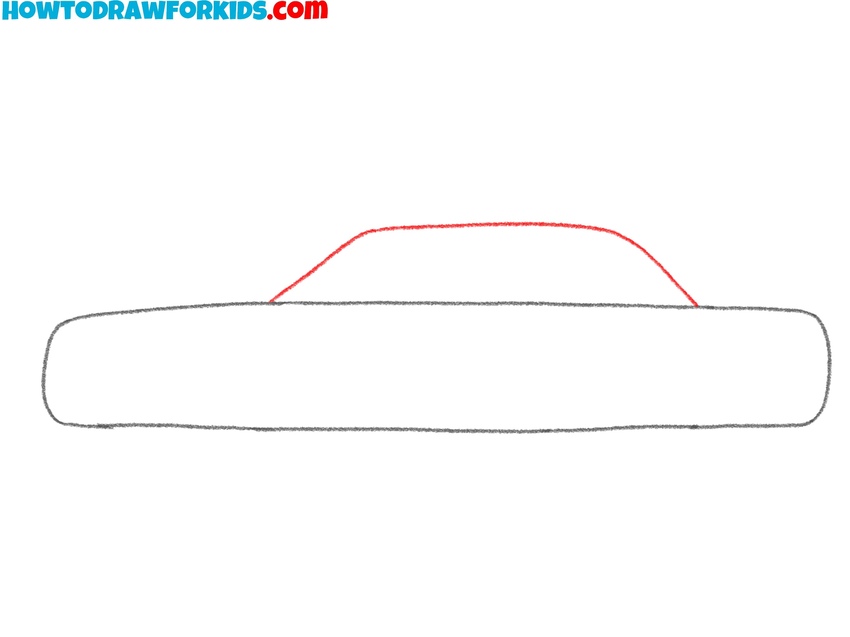
- Sketch the wheels.
Next, draw the wheels by adding two circles near the bottom of the police car. Position The wheels should be slightly larger than you might expect, as police cars typically have sturdy tires. Inside each wheel, draw a smaller circle to represent the rims. Try to make both wheels symmetrical.

- Draw the police car’s doors.
Since this is a police sedan, it should have four doors. First, sketch a vertical line to separate the front and rear sections. Then, add a long curved lines creating the shape of the front and rear doors. Then, draw the handles using small horizontal rectangles, positioning them slightly above the center of the doors.
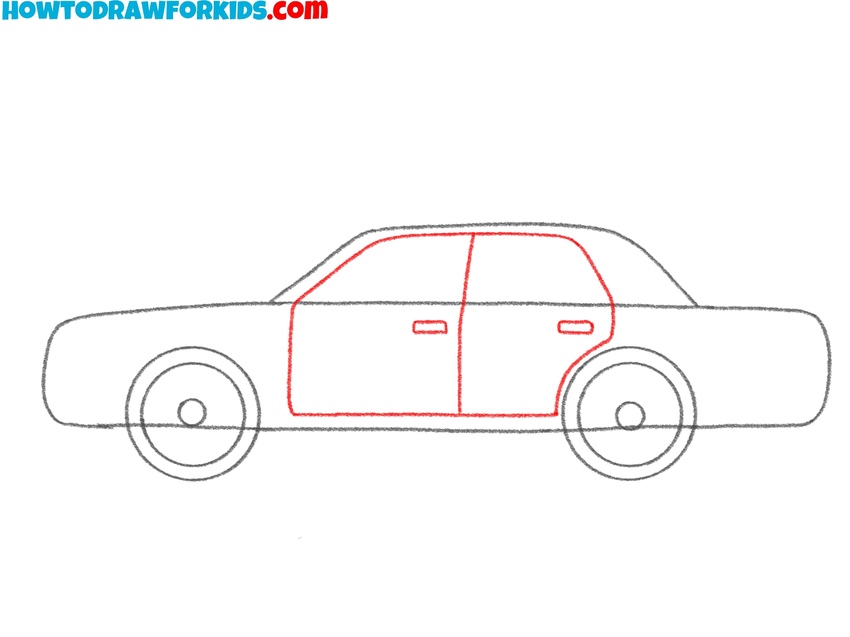
- Add the police badge and siren.
Begin by drawing a simple police badge or shield on the front door. This is an important feature, as police vehicles typically have official markings to distinguish them. You can sketch a small shield shape and add a symbol inside it. Next, draw the siren light on top of the car by sketching a small rounded rectangle.

- Sketch the headlight and rear light.
First, draw the front and rear bumpers with simple curved lines. Them, draw a small, rounded rectangle at the front of the car for the headlight. This should be positioned just above the bumper line. Then, move to the back and add the rear light.

- Add the windows, rear view mirror, and push bar.
Now, draw the side windows of the police car, following he shape of the top parts of the doors. Them add the strong and rear windows. At the front corner of the front window, draw the rear view mirror. Then draw the bull bar at at the front, another district part of police cars.

- Clean up and finalize the line art.
Before adding color, go over the entire police car drawing and erase unnecessary guidelines. Strengthen the main outlines to give the police car a crisp, finished look. If there are any uneven lines, adjust them so the drawing looks smooth and professional. You can also add small details at this stage.

- Add colors to the vehicle.
Typically, police vehicles have a black and white color scheme, so shade the body accordingly. The upper section and doors are usually white, while the lower part of the car remains black. Color the siren light with red and blue. Use gray for the rims and black for the tires.
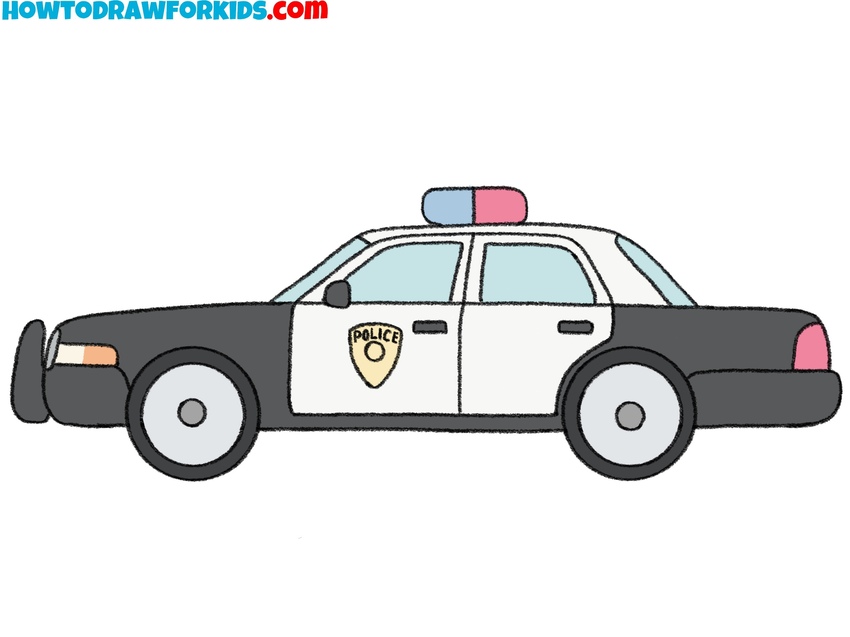
How to Draw a Police Car: Additional Techniques
If you’ve mastered the basic police car drawing tutorial, it’s time to proceed with additional guides to refine your skills and find new ways to sketch these iconic vehicles. As I’ve mentioned before, these tutorials will demonstrate simpler methods while providing valuable practice.
Alternative Police Car Drawing Technique
This method is a simplified version of the basic how to draw a police car tutorial, using fewer details and basic shapes to create a compact and cartoon-like police vehicle. The drawing is rounded with a smaller body, larger windows, and minimal additional elements. Compared to the first tutorial, this version has simpler proportions, fewer structural lines, and a more stylized appearance, making it easier for beginners.
Start this tutorial on how to draw a police car by sketching the base of the vehicle with a rounded rectangular shape. Add the roof using another curved rectangular form on top of the base. Draw the windows by outlining a smaller shape inside the roof area. Draw two circles at the bottom for the wheels and add a smaller circle inside each one. Attach side mirrors on the side.
Sketch the siren on top of the car using a small rounded rectangle. Add the headlight, rear light, and simple bumpers. Draw a five-pointed star on the side to indicate the police marking. Finalize by cleaning up lines and refining details. Once the structure is complete, color the police car with a black-and-white scheme, adding a red siren and a gold star emblem.
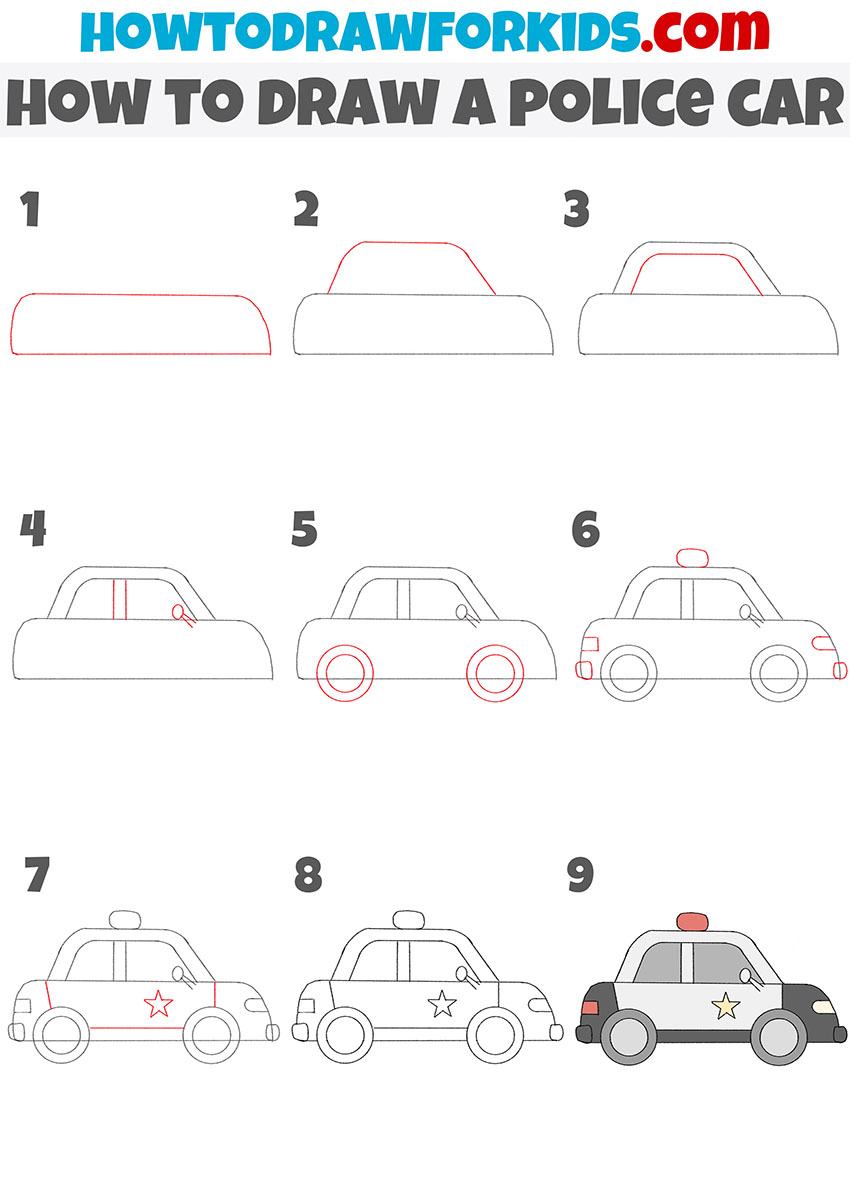
Simple Police Car Drawing Technique
This method for learning how to draw a police car is distinctive due to its straight lines, boxy proportions, and minimal detailing. This is what way where we will use really simple, basic lines to draw a police car.
Start by drawing a long rectangle to form the car’s main body. Add a smaller trapezoid on top to create the roof structure. Sketch two circles at the bottom for the wheels. Draw the front and rear windows using straight lines that connect to the roof. Add vertical and horizontal lines to define the doors. Outline the side mirrors and handles.
Draw a rectangular siren on top of the roof. Sketch additional details such as headlights, taillights, and a bumper. Complete the wheels by adding inner circles. Refine the drawing by cleaning up extra lines. Finalize the design by coloring the police car with a black-and-white scheme, a red and blue siren, and yellow lights.
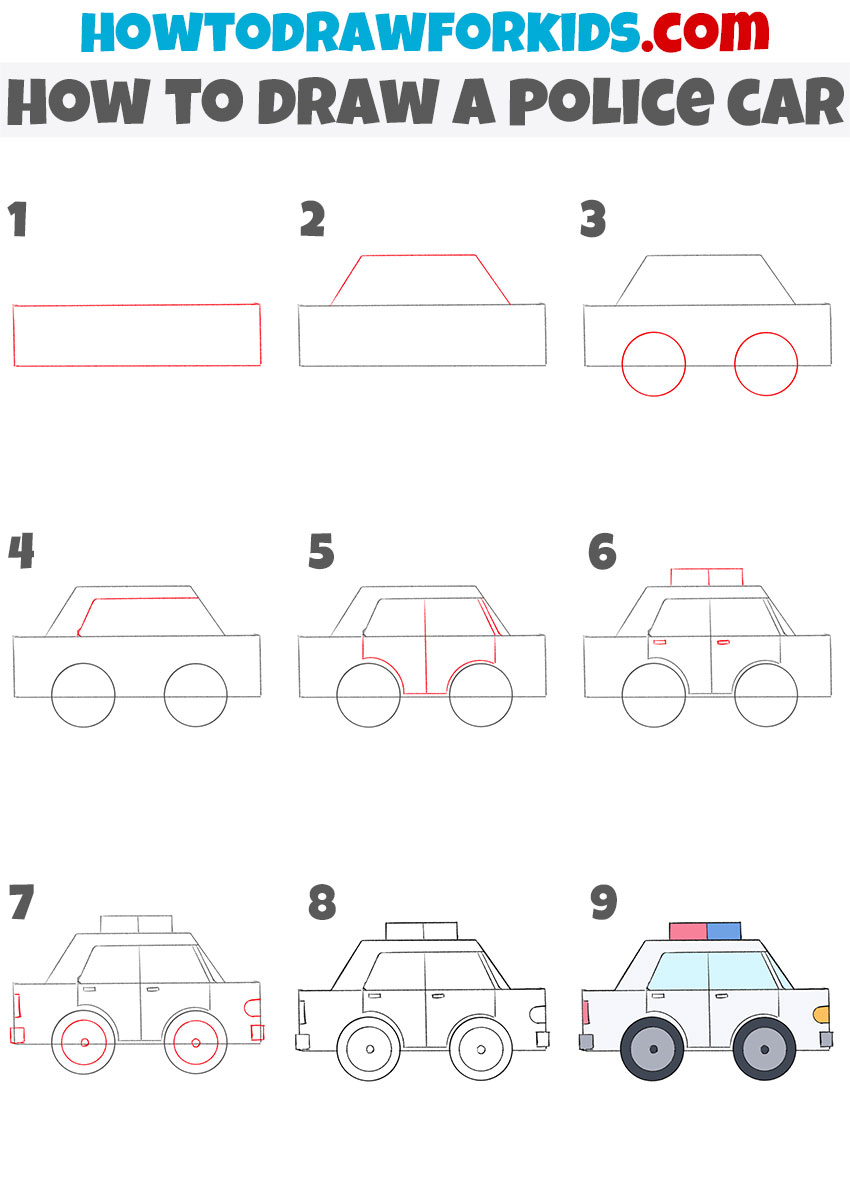
Conclusion
Today, we learned how to draw a police car using very simple methods and basic instructions. Let me remind you that we only created a basic version, which you can modify to make a more unique drawing of a police car. Use your knowledge, add desired elements and create your own police car drawing.
To continue learning how to draw vehicles, work on drawing a ship, and at the same time, practice drawing an airplane to master illustrating vehicles that drive on the ground, float on water, and fly in the air.

